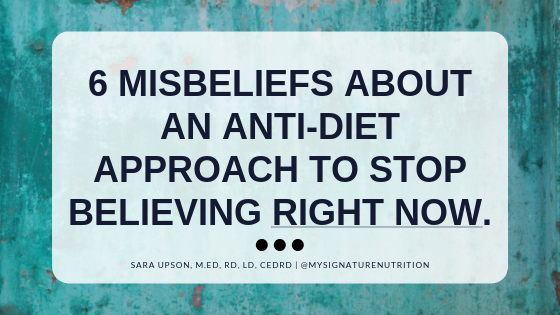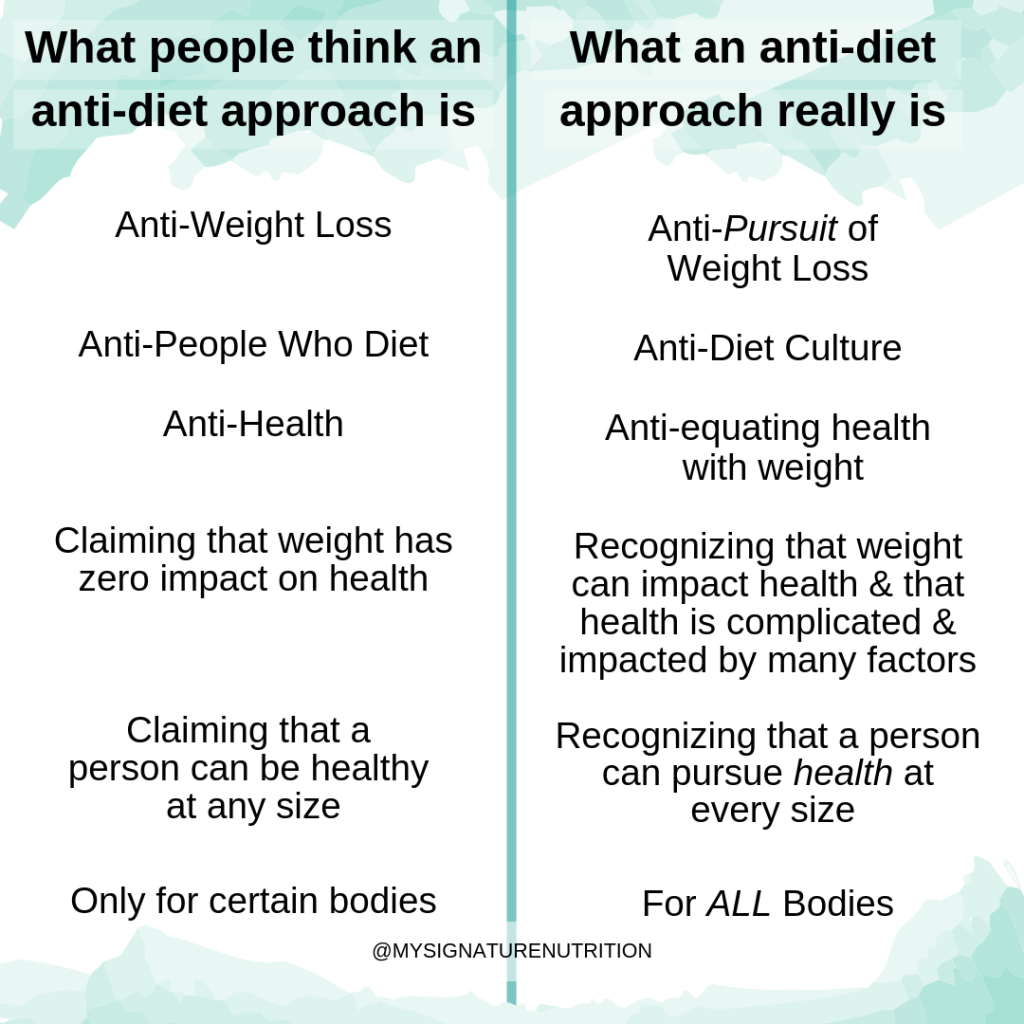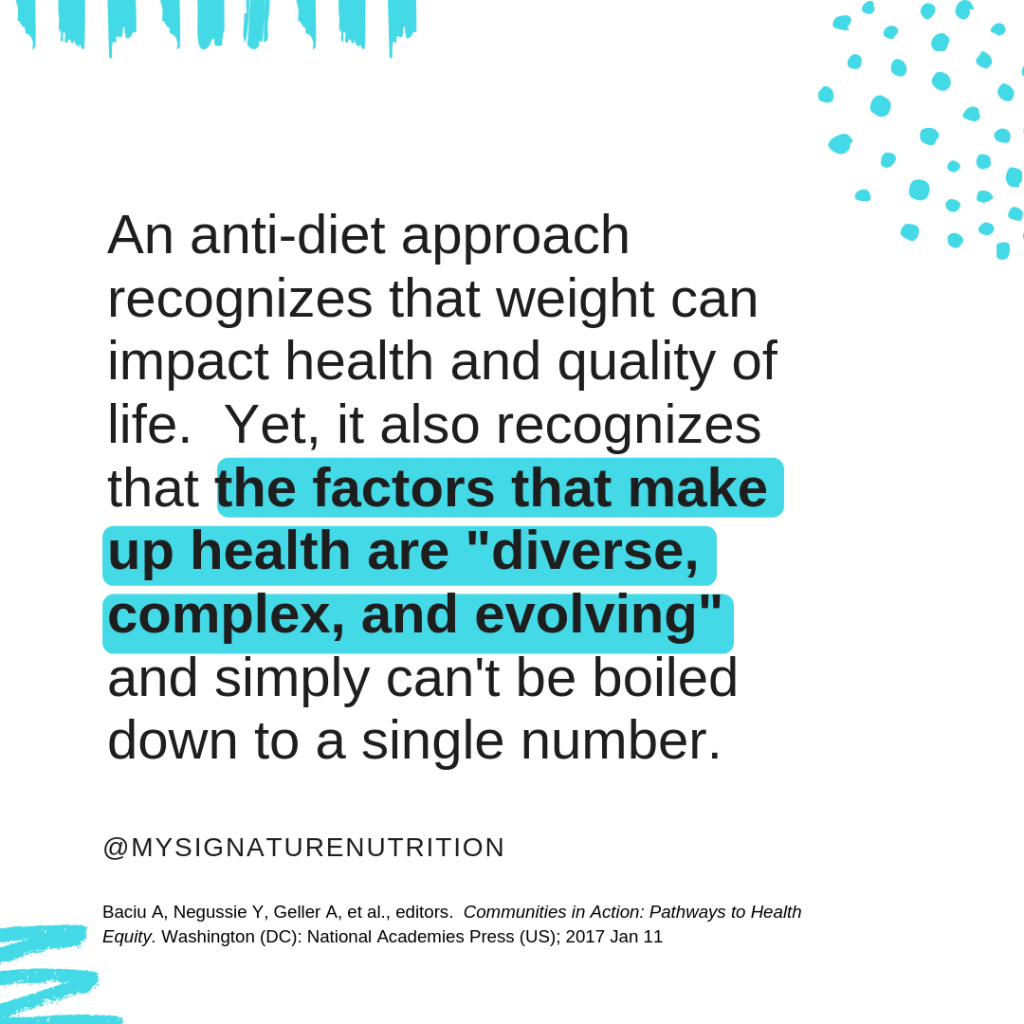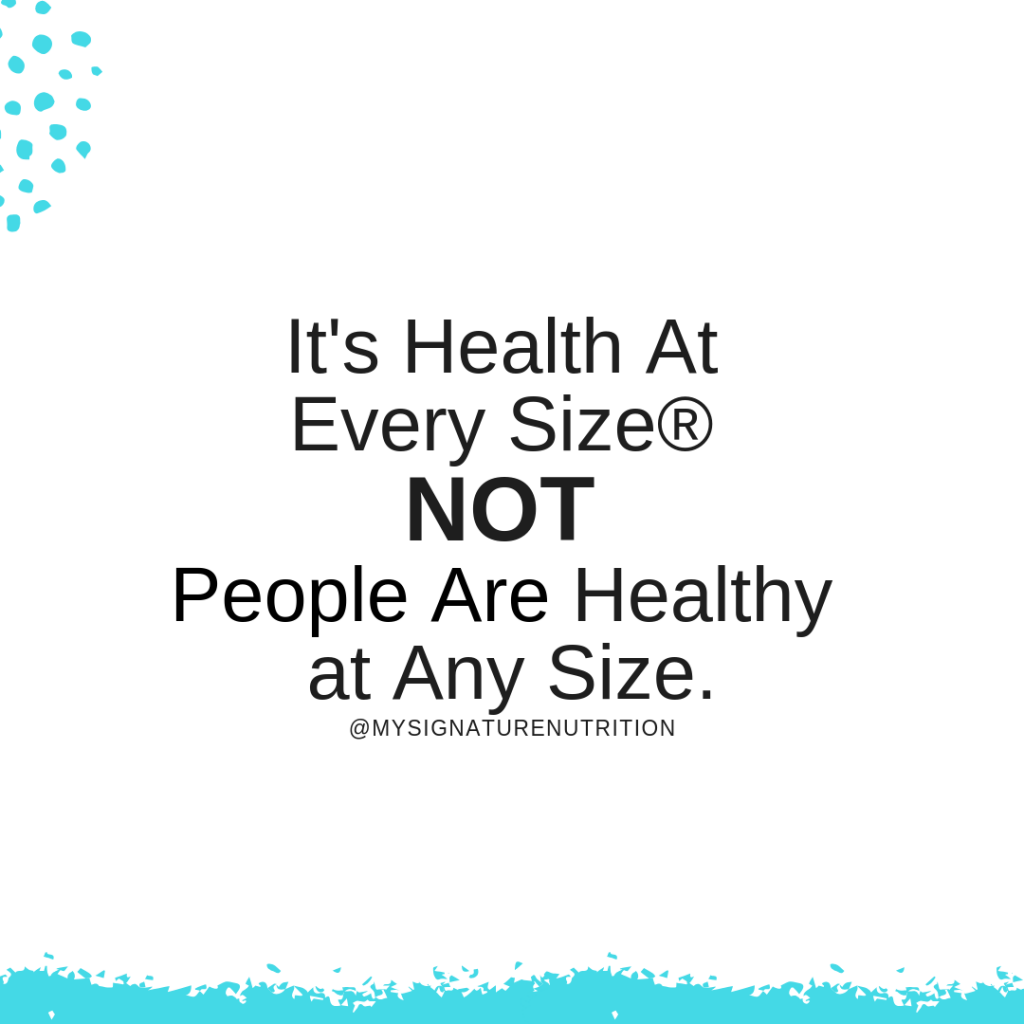6 Misbeliefs About An Anti-Diet Approach to Stop Believing Right Now!
July 3rd, 2019 by Sara Upson

Clarifying Truths about what Health At Every Size® Is and Isn’t.
I’ve always found it so frustrating when people played an air flute backwards. It’s seriously not that confusing and the flute always goes to the right. I did my bachelors degree in music and I played the flute, so when someone does the air flute backwards I begin to feel a prick in the back of my spine, my lips turn down in a scowl, and my eyes roll into the back of my head.
How does this relate to an anti-diet, weight inclusive approach? Let me explain. There’s so much confusion about what is Health At Every Size® (HAES) or a anti-diet/ weight inclusive approach and when people first learn about it they tend to have some major misconceptions about what’s true and what isn’t. When I hear all the mistruths about HAES I feel that prick in the back of my spine, my lips turn into a scowl and my eyes roll into the back of my head times 1,000,000. Because, while the air flute done the wrong way may be annoying (to me)- it’s not harmful. But, when people have these misperceptions about HAES that are blatantly wrong- it’s not only annoying, it’s harmful and it literally gets people killed.
Saying that weight stigma (from diet culture and a weight centric approach) kills may seem dramatic, but it’s not. Weight stigma leads to a 60% increase in mortality rate, worse health outcomes, and lower quality of life. On top of that, a weight centric approach places all the blame on weight so people don’t get the help they need, other medical concerns are often overlooked until too late (blamed all on weight), and leads to weight cycling leaving people more stressed and confused than ever.
A HAES approach improves quality of life and health outcomes! So here are six common misconceptions to know about HAES or an anti-diet, weight inclusive approach. And for clarity, anti-diet and weight inclusivity are a part of HAES, but HAES also includes a much larger social construct. The words are often used interchangeably and to some degree they are, yet they’re also not.

1. A HAES approach is anti-weight loss. (FALSE)
A HAES® approach isn’t anti-weight loss. A HAES approach is anti-pursuit of weight loss. It might take a minute to wrap your head around that- so I’m going to say it again. An anti-diet approach isn’t anti-weight loss. It’s anti-pursuit of weight loss. It’s a subtle difference and a huge difference.
Pursuing weight loss is dieting and diet culture. There is abundant research that diets do not work long term, that 95% of diets result in regain of the lost weight and that 66% of people gain back more weight than they lost. Because diets don’t work long term (defined as greater than 2- 5 years) then what you end up seeing is weight cycling or repeated bouts of losing and gaining weight.
Anti-pursuit of weight loss means that there’s not a focus on weight or dieting. That the focus is on health behaviors- eating, exercise, sleep, stress management, social engagement, etc (of course this is only if you want to focus on health because HAES also respects body autonomy). As you focus on these behaviors you may or may not lose weight but health improves. The truth is some people will lose weight, some will gain and some will stay the same. The focus isn’t on weight though- the focus is on behaviors and there’s no attachment to body changes. Weight loss isn’t good or celebrated. Weight gain isn’t bad or looked down on. But regardless of the outcome it’s not against weight loss, it’s against the intentional pursuit of weight loss.

2. A HAES approach is against people who diet. (FALSE)
A HAES approach is anti-diet but it’s not anti-people-who-diet. It’s anti-diet culture. It’s against the system and culture at large that make you feel like you have to diet, that make you feel like you’re wrong or not enough because of your body, or that makes you feel that you must look and act a certain way.
A HAES approach is actually for body autonomy- your body, your choice. If you want to diet, that’s your choice. A HAES approach is against the culture that makes you feel like you have to diet.
Many people who embrace a HAES approach were dieters once or struggled with their eating. I did. I can understand what it’s like to feel so desperate to change that you’re willing to do anything (and I have a lot of thin privilege so I can’t even begin to fully understand what it’s like for people who live in larger bodies). A new diet is seductive, and alluring- it’s full of hope and backed with really deceptive marketing. Being anti-diet means working to take that allure away because it’s false hope and just keeps you stuck in diet culture. If you choose to diet though, I’m not against you. I’m just against the culture at large that keeps making you feel like you have to diet.

3. A HAES approach is anti-health. (FALSE)
Just writing that I begin to feel that prick in my back and the scowl on my face. Health is literally in the name of a HAES approach, yet one of the first things people jump to is that HAES is anti-health.
A HAES approach is about health (if you want to- still supports body autonomy) and recognizes that weight and health are not the same thing. A weight centric approach says that weight is equal to health so the focus is 100% on weight loss at all costs- do whatever it takes to get there (meanwhile the diet ends, behaviors stop, and there is a regain of lost weight, oftentimes plus more). A Weight neutral or weight inclusive approach says that health is NOT equal to weight. The focus then is on health behaviors- eating, exercise, sleep, stress management, social engagement, etc. There is zero focus on weight, but instead on internal cues- such as how do you feel, what brings you joy, self-compassion and self care.
In a weight centric approach if you’re not pursuing weight loss, focusing on your weight, or being diligent about your weight then you’re not being healthy. In a weight neutral approach there’s no weight focus (which is why it’s so hard for people entrenched in diet culture, stuck in a weight centric approach to wrap their mind around an anti-diet, weight neutral approach). In a weight neutral approach the focus is on health behaviors for the sake of health not weight. And even saying for the sake of health isn’t even really right. It would be better put to say health behaviors for the pursuit of satisfaction and joy.
And on an even deeper and more important level- it also recognizes that health is a privilege. Not everyone is healthy or able to be healthy. There are many factors to health that are beyond our control. Being anti-diet recognizes respect for all whether or not you’re able to be healthy or pursue health.
But because so many people confuse weight with health then when you’re not focusing on weight they don’t know what to focus on. They automatically assume that it’s not healthy because it’s not focused on weight. This couldn’t be further from the truth. A HAES approach is rooted in health it just uses health behaviors to define health instead of weight.

4. A HAES approach says that weight has zero impact on health. (FALSE)
Many people, particularly physicians or individuals in the medical field, believe that HAES and the anti-diet movement claim that weight has zero impact on health. This isn’t true.
A HAES approach recognizes that weight can impact health and quality of life, yet it also recognizes that health is complicated and impacted by many different factors. A HAES approach looks beyond a single number and to include many other factors that impact health such as socioeconomic status, race, gender, sexual orientation, gender expression, adverse childhood experiences, trauma, environmental conditions, weight stigma, etc.
A weight centric approach is an extremely reductionist approach. It assumes that if you’ve lost weight or maintained weight that you’ve done something healthy when in fact the behavior done may be extremely unhealthy. The irony is, an approach that focuses on health behaviors is considered unhealthy just because it doesn’t focus on weight. The factors that make up health are “diverse, complex, and evolving”(1), and they certainly can’t be boiled down to a single number. That is what a HAES approach recognizes.

5. A HAES approach says that a person can be healthy at ANY size. (FALSE)
A HAES approach isn’t saying that every single person is healthy. So many people get stuck on this and say- you can’t tell me that the person on TV (or wherever) is healthy. So again, a HAES approach isn’t about classifying someone of any size as healthy. A HAES approach is about the ability to pursue health regardless of size. It says that weight is not the definition of health- that you can’t look at someone and tell if they’re healthy or unhealthy. That you can’t look at someone and tell what they eat or how much they exercise. And beyond that- it says that even if someone isn’t able to pursue health or struggles with health concerns that they’re still worthy of respect.
In a HAES approach, health is defined as a capacity with the ability to pursue healthy behaviors not an outcome. It says that health is complex and looks past the behaviors themselves to also include access to care, access to quality care, respectful care, care free from stigma. It recognizes that all bodies deserve the right to be treated with dignity and respect- that weight doesn’t change this, that health or pursuit of health doesn’t change this, or anything else.

6. A HAES approach is only for certain people. (FALSE)
A HAES approach is for all people. All bodies. A HAES approach says that all bodies are worthy of respect, period.
It doesn’t matter what a person’s body shape, size, health, race, gender, gender identity, status, or anything else is because all bodies are worthy of respect. And in addition to that- a person doesn’t have to be healthy, focus on being healthy or desire to live a long life to be worthy of respect. HAES recognizes all people as worthy regardless of size or health (or anything else)…
Body Respect is for all people. ALL people, period. This is where HAES becomes deeply rooted in social justice. Yes it’s about reclaiming your health separate from weight- but it’s also so much more than that- it’s equal respect for all people. It’s equal access to care. It’s equal access to respectful care, to care free from stigma, to care that meets your needs- not a check in a box.

To learn more about a Health At Every Size Approach please check out the Association for Size Diversity and Health. It’s an amazing resource- tons of information- free webinars that you can watch and learn from.
- National Academies of Sciences, Engineering, and Medicine; Health and Medicine Division; Board on Population Health and Public Health Practice; Committee on Community-Based Solutions to Promote Health Equity in the United States; Baciu A, Negussie Y, Geller A, et al., editors. Communities in Action: Pathways to Health Equity. Washington (DC): National Academies Press (US); 2017 Jan 11. 3, The Root Causes of Health Inequity. Available from: https://www.ncbi.nlm.nih.gov/books/NBK425845/






December 30, 2019 at 5:17 am, Counting down to 2020: But first the top nine of 2019. – MySignatureNutrition said:
[…] Read the entire blog post here. […]